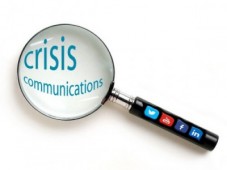By Ashley Carter
“What’s the worst that could happen?” Melissa Agnes asserts that this is a very important question for every communications professional to ask themselves while developing campaigns for companies or organizations.
Agnes gives us an example wherein the worst could happen, and did: the #McDStories campaign. McDonalds developed and launched this Twitter campaign in January of 2012. Along with #McDStories they launched #Meetthefarmers, both hashtags were promoted and sponsored by McDonalds. The latter hashtag was used to highlight the stories of the suppliers of the food chain. While #meetthefarmers was relatively successful, #McDStories was another story…pun intended.
Twitter users had a field day with the hashtag and began to use it to recount their negative experiences with the fast food chain. One Forbes article claims that the hashtag became a “bashtag.” These images from Business Insider show just a few of the extremely unfortunate tweets that used #McDStories.
McDonald’s social media director, Rick Wion, emailed a statement
shortly after pulling the hashtags, that gave insight into how they managed the crisis. He states that the promoted hashtag was removed within two hours of the original posting. Additionally, he maintains that the number of conversations using the hashtag dropped from 1600 to only a few dozen within an hour of being removed.
Though McDonalds responded quickly and removed the promoted post, the question begs to be asked: could this have been prevented? According to Melissa Agnes, yes. She asserts that planning ahead can help to avert such crises from occurring in the first place. As we all know, planning is an integral part of public relations. In this case, McDonalds could have planned ahead by being absolutely sure that they had made the best decision when launching this campaign.
But how can they ensure good decision making? By using risk assessment and issue prevention. The group of individuals that created the campaign should have looked at the hashtag from every angle and really thought about whether or not it was a good choice. By doing the work ahead of time, they would have saved themselves a lot of trouble and bad publicity.
Now we circle back to the question posed earlier: “what’s the worst that could happen?” Experiencing a crisis that could have been prevented. Let’s look at the McDonald’s #McDStories campaign as a cautionary tale: think ahead and weigh the possibilities.
Connect with Ashley Carter on Twitter.







Ashley,
I enjoyed reading your article and completely agree with Melissa Agne’s point of thinking about the worst case scenario before releasing any campaign. Sometimes people have a different view than you do and you don’t want your hashtag to become a bashtag. When working on projects, people need to get opinions from others who have not seen the project and can give an unbiased opinion. When you only have one perspective, this is a very skewed view which can cause problems in the future.
It’s so interesting to me to think about how one hashtag that a group of people thought was going to be life changing for many turned out to be a nightmare for McDonalds. I think Melissa is completely right about always needing to ask yourself “what is the worst that could happen?”. Needing everyone’s opinion whether that may be good or bad is crucial to the hopefully successful campaign so companies don’t run into situations like McDonalds did. Hopefully many companies were able to learn from this case study!
Ashley,
I really enjoyed reading more into this situation and learning how McDonald’s dealt with the issue. I am shocked that in the matter of 2 hours a hashtag could do so much damage, but I guess that’s the risk you take on with being such a big company. I think this is a great example to look at when dealing with a crisis so quickly. Even though this was a bad decision for McDonald’s, I think they handled it well. I’m sure after this mistake they think twice about all their campaigns… well at least I hope so.
I felt the same way about the two hours. When researching for this article, I was absolutely flabbergasted that the tweet had only been on their account for two hours. Its a true testament to the power of social media. This is why it is so important to do as Melissa Agne’s advice to always ask what the worst outcome could be before posting.